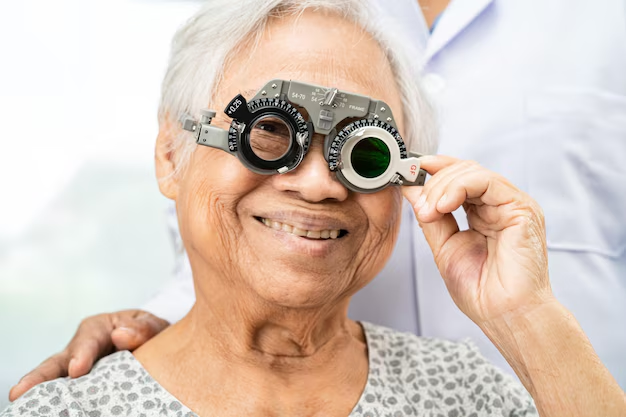Understanding Medicare Coverage for Cataract Surgery and Astigmatism
Cataract surgery can be a life-changing procedure, restoring clarity to vision and dramatically improving quality of life. However, when faced with the double whammy of cataracts and astigmatism, many wonder about the procedure's coverage under Medicare. In this comprehensive guide, we delve into the details of Medicare's coverage for cataract surgery when astigmatism is also a factor. We will explore related topics, provide actionable insights, and ensure you have a robust understanding by the end.
What is Cataract Surgery?
Let's start with the basics. Cataract surgery involves the removal of the eye's natural lens when it becomes clouded, often due to aging, and replacing it with an artificial lens. This procedure is one of the most common and successful surgeries performed today. But how does astigmatism complicate cataract surgery?
Understanding Astigmatism
Astigmatism is a common refractive error that results in blurred vision due to the irregular shape of the cornea or lens. Those with astigmatism see blurred or distorted images, as their eyes cannot focus light evenly on the retina. When cataract surgery is performed on individuals with astigmatism, additional interventions like Toric lenses or laser-assisted surgery might be needed.
Does Medicare Cover Cataract Surgery?
Medicare generally covers cataract surgery if it's deemed medically necessary. This includes the cost of removing the cataract and implanting a conventional intraocular lens (IOL). But what happens when astigmatism enters the scene?
Medicare and Astigmatism Correction
Typically, Medicare covers standard cataract surgery, but the coverage does not automatically extend to astigmatism correction. However, understanding specific terms and conditions and additional coverage options can be invaluable.
- Standard Cataract Surgery: Medicare Part B usually covers cataract surgery that includes lens replacement with a basic IOL, using traditional surgical methods.
- Astigmatism-Correcting Lenses: Medicare doesn't cover premium lenses, such as Toric lenses that correct astigmatism, unless medically justified.
- Laser-Assisted Surgery: If the surgical approach involves laser techniques that specifically correct astigmatism, additional out-of-pocket expenses often occur.
Navigating Medicare Plans for Extended Coverage
Understanding Medicare's limitations can motivate you to explore other options. This section helps you navigate necessary considerations for more comprehensive coverage for astigmatism-related expenses.
Medicare Advantage Plans
Medicare Advantage Plans (Part C) are offered by private companies approved by Medicare. These plans must cover everything traditional Medicare covers, but they often provide additional benefits, which might include:
- Vision Care: Some Advantage plans offer enhanced vision benefits covering advanced cataract procedures, including those addressing astigmatism.
- Lower Out-of-Pocket Costs: Depending on the plan, you could pay less out of pocket for corrective lenses or laser-assisted surgery.
Supplemental Insurance Options
Medigap plans, designed to supplement Original Medicare, can defray out-of-pocket costs:
- Gaps in Coverage: While Medigap does not typically cover extra costs associated with astigmatism, it can help with deductibles, copayments, and coinsurance.
Preparing for Surgery: Practical Steps
When preparing for cataract surgery, especially when dealing with astigmatism, you can take concrete steps to facilitate the process and manage costs effectively.
Consult Your Healthcare Provider
- Pre-Surgical Evaluation: Discuss your astigmatism specifics with your ophthalmologist to assess the need for advanced lens options.
- Cost Evaluation: Request a detailed breakdown of the costs involved, separating what is covered by Medicare and what isn’t.
- Medicare Plan Review: Consult with your plan provider to understand your benefits and assess whether supplemental coverage is needed.
Strategic Financial Planning
- Flexible Spending Accounts (FSA) or Health Savings Accounts (HSA): Consider using these to offset any out-of-pocket expenses associated with cataract surgery.
- Insurance Verification: Regularly verify with your insurance providers about the coverage of specific procedures and any changes in your benefits.
Key Takeaways on Medicare and Cataract Surgery with Astigmatism
Here’s a snapshot of crucial insights concerning Medicare's coverage for astigmatism and cataract surgery:
- Basic Coverage: Medicare Part B covers the standard cataract surgery procedure but not advanced lenses or methods addressing astigmatism.
- Explore Medicare Advantage: Plans may provide additional vision-related benefits beyond Original Medicare's scope.
- Extra Coverage Options: Consider Medigap plans or flexible spending accounts to offset costs not covered by Medicare.
- Pre-Surgery Preparation: Engage with healthcare providers early and thoroughly review all costs involved.
- Financial Strategy: Proactively manage your expenses and insurance coverage to avoid surprises.
Conclusion: Making Informed Decisions
Addressing vision issues like cataracts and astigmatism requires both medical and financial planning. By understanding Medicare’s coverage limits concerning astigmatism, evaluating your options for extended coverage, and preparing strategically, you are better positioned to manage both your health needs and financial responsibilities effectively. Remember, discussing your personal circumstances in detail with your healthcare provider and insurance company will yield the best outcomes tailored to your specific healthcare needs.
